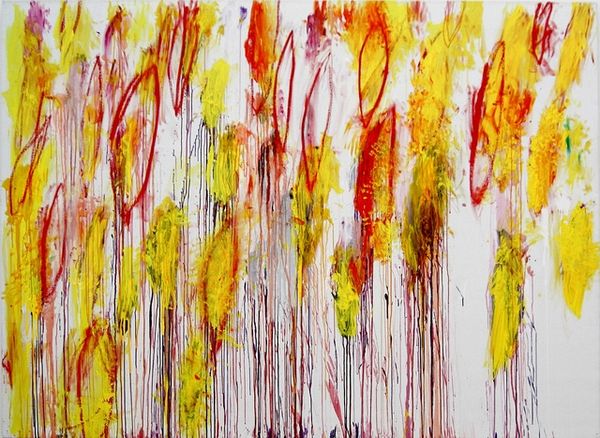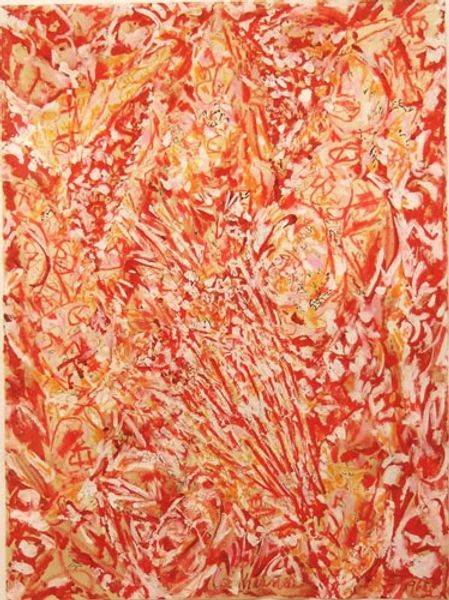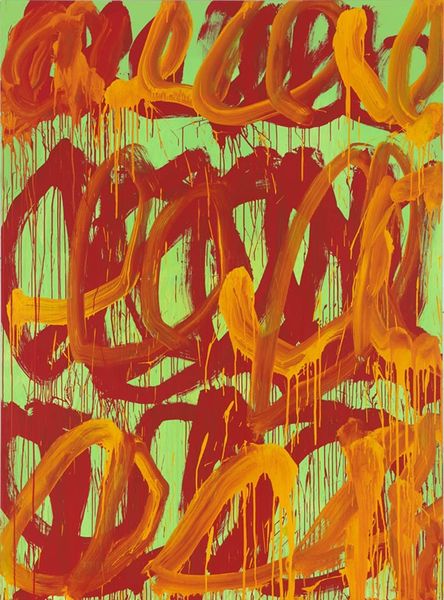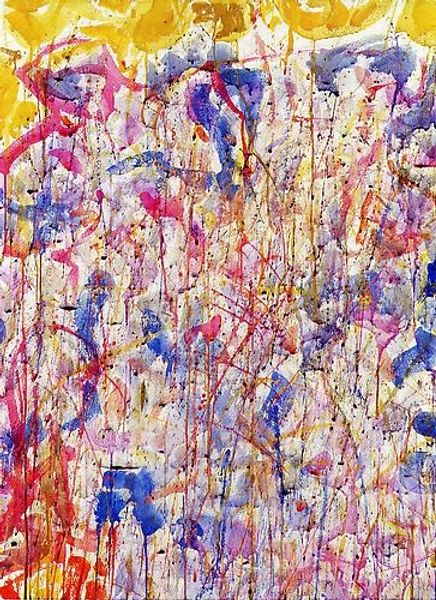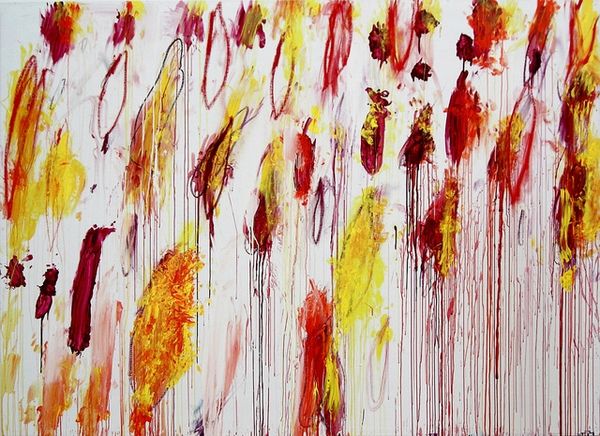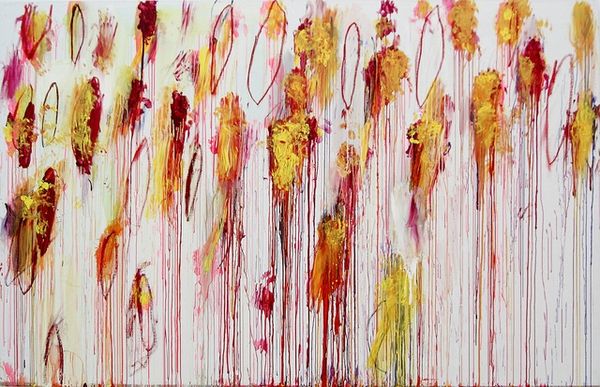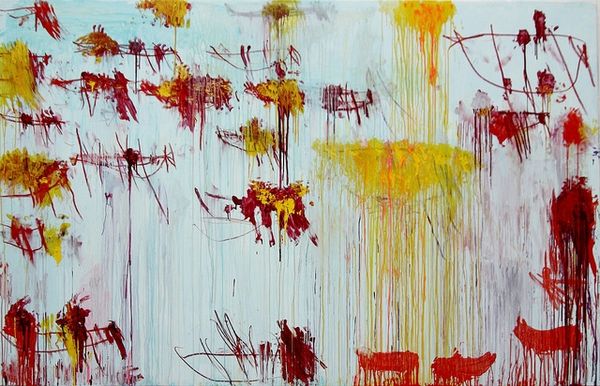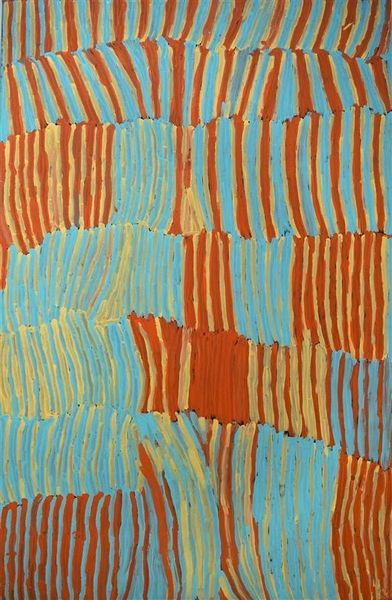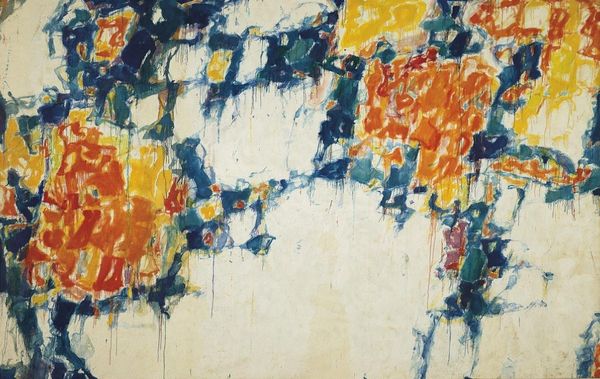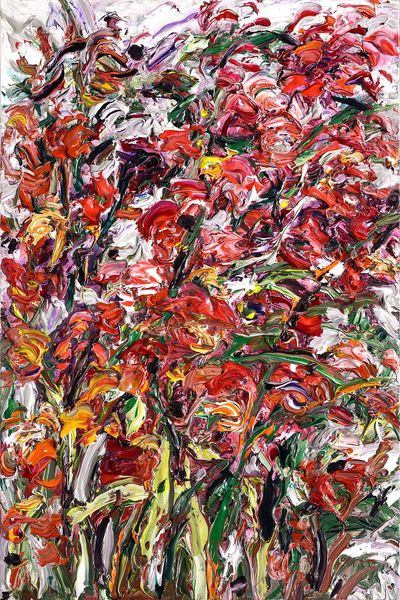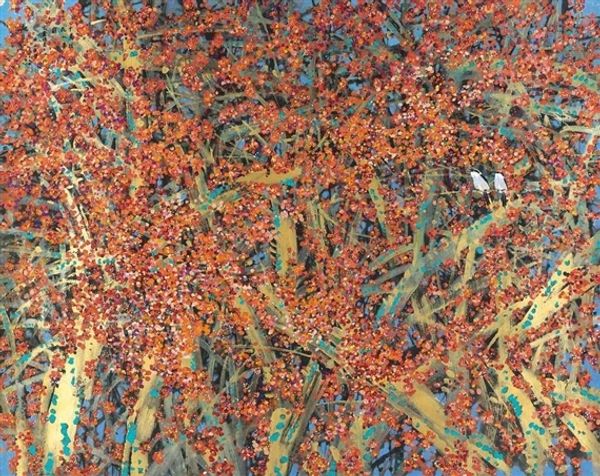
#
neo-dada
#
nouveau-réalisme
Copyright: Arman,Fair Use
Curator: Before us is "Dirty Painting," crafted by Arman in 1989. The mixed media work employs oil paint and a distinct impasto technique. What springs to mind when you first view this piece? Editor: It feels visceral. The density of the paint application gives it an almost three-dimensional quality. It is a strong work and conveys the sense of entropy and the unavoidable processes of decay. Curator: Indeed. Arman was closely affiliated with the Nouveau Réalisme movement, and they engaged with found objects and industrial materials to critique consumer culture. Consider how "Dirty Painting," as the title states, implicates painting itself in a similar process of material accumulation and perhaps, critique. This feels rather timely considering contemporary issues such as waste accumulation and climate degradation. Editor: Looking at the texture, one cannot ignore the physicality and layering. The red, orange, and yellow tones build into these dense ridges, giving each painted mark real sculptural presence. Semiotically, that choice of warm hues makes a bold statement. Curator: The title "Dirty Painting" challenges the traditional expectations of painting as a refined and idealized medium, don't you think? Arman seems to relish the materiality of paint. This relates to wider political themes, given how matter painting in particular challenged what can and can’t be included in the exclusive space of “high art,” often dominated by elitist sensibilities. Editor: The way the light interacts with the heavily applied impasto also creates an intriguing interplay of shadows and highlights. These aren't simple swathes of color, it becomes a field of tiny chromatic nuances when you adjust your distance. I am curious, what could that mean with respect to intersectionality? Curator: Precisely. "Dirty Painting" and pieces alike blur those binaries and disrupt any sort of monolithic vision. By including unconventional materials and subverting traditional aesthetic norms, matter painting opened the art world to new voices, materials, and perspectives. This inclusiveness created avenues for marginalized groups, thereby democratizing it somewhat and empowering artists whose practices engage more explicitly with social and political issues. Editor: Interesting... It invites a very direct and embodied viewing experience. You practically want to touch it to fully understand its structure! Curator: Exactly. It also challenges notions of artistic purity and elevates the discarded. Thank you for lending me your analytical eye, it makes my job infinitely easier when explaining social and artistic contexts. Editor: Anytime! I came seeking visceral expression and, thanks to your socio-political contextualizing, am walking away seeing so much more.
Comments
No comments
Be the first to comment and join the conversation on the ultimate creative platform.
